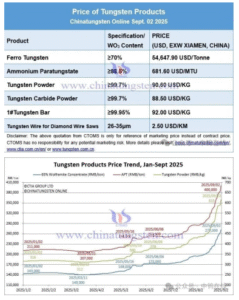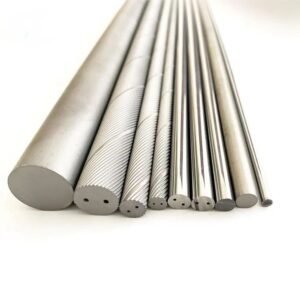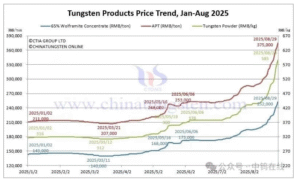When machining aluminum, carbide inserts are widely used because of their superior hardness and wear resistance. However, many customers face the issue of premature insert chipping when boring aluminum, leading to poor machining quality, reduced productivity, and higher production costs.
In this article, we will explore the main causes of carbide insert chipping in aluminum boring operations and provide practical solutions to avoid these problems.
I. Common Causes of Carbide Insert Chipping in Aluminum Machining
1. Incorrect Cutting Parameters (Feed and Speed)
Aluminum is a soft and ductile material. If feed rates are too high or cutting speeds are too low, the insert may experience extreme cutting forces, resulting in chipping:
- Excessive feed rate: Generates too much cutting force, leading to sudden chipping.
- Low cutting speed: Causes built-up edge (BUE) formation, which can damage the insert when it breaks away.
✅ Tip: Aluminum requires high-speed cutting with a moderate feed rate to ensure smooth cutting and avoid chipping.
2. Wrong Insert Grade or Geometry
Carbide inserts designed for steel or hard materials are too brittle and have dull cutting edges, making them unsuitable for aluminum.
- For aluminum, inserts must have sharp cutting edges (positive rake, large rake angle) and polished surfaces to reduce friction and material adhesion.
✅ Tip: Always use uncoated or PVD-coated, polished carbide inserts specifically designed for aluminum machining.
3. Built-Up Edge (BUE) Formation
Aluminum’s ductility makes it prone to chip adhesion on the cutting edge, forming a built-up edge. When this BUE detaches, it often tears the cutting edge, causing chipping.
✅ Tip:
- Apply higher cutting speeds to minimize BUE.
- Use high-polished, mirror-finish inserts and proper lubrication to prevent chip adhesion.
4. Poor Tool or Workpiece Clamping (Rigidity Issues)
If the boring bar or workpiece lacks rigidity:
- Vibration and chatter during cutting generate uneven forces, causing insert chipping.
- Excessive overhang of the boring bar increases deflection, leading to instability.
✅ Tip:
- Keep boring bar overhang minimal (length-to-diameter ratio L/D < 3 when possible).
- Use anti-vibration boring bars for deep holes.
- Ensure both tool and workpiece are securely clamped.
5. Chip Evacuation Problems
Improper chip evacuation may cause chips to clog the cutting zone or re-cut, damaging the insert.
✅ Tip:
- Use inserts with optimized chipbreaker designs for aluminum.
- Ensure efficient coolant delivery to flush chips away from the cutting area.
6. Improper Coolant Use or Insufficient Lubrication
Without adequate coolant or lubrication:
- Excessive heat can cause thermal cracks or soften the cutting edge.
- Poor chip evacuation and material adhesion worsen chipping.
✅ Tip:
- Use high-pressure or targeted coolant systems.
- Consider Minimum Quantity Lubrication (MQL) for enhanced lubrication and cooling.
7. Aluminum Material Defects (Inclusions or Impurities)
Some aluminum alloys may contain hard inclusions or porosity that cause sudden insert chipping during cutting.
✅ Tip:
- Choose high-quality, clean aluminum alloys.
- Conduct material inspection if quality issues are suspected.
II. Summary of Solutions to Prevent Insert Chipping in Aluminum Boring
| Problem Cause | Solutions |
|---|---|
| Incorrect cutting parameters | Increase cutting speed (300–1000 m/min), reduce feed rate |
| Wrong insert grade/geometry | Use sharp, uncoated or PVD-coated inserts designed for aluminum |
| Built-up edge formation | Use polished inserts, increase speed, ensure proper lubrication |
| Poor tool/workpiece rigidity | Reduce overhang, use anti-vibration bars, secure clamping |
| Chip evacuation issues | Use chipbreaker inserts, ensure coolant for chip removal |
| Coolant/lubrication issues | Apply high-pressure coolant, consider MQL if necessary |
| Aluminum material inclusions | Select clean, high-quality aluminum alloys |
III. Conclusion
Premature carbide insert chipping in aluminum machining is often caused by a combination of factors. To avoid this costly issue, manufacturers should focus on proper cutting parameters, the right insert selection, machine and tool rigidity, material quality, and efficient lubrication and chip control.
At Zhuzhou Zhirong Advanced Materials Co., Ltd, we specialize in producing high-quality carbide inserts for aluminum machining, made from 100% virgin tungsten carbide powder, with excellent toughness, sharpness, and consistent performance.
We also offer free samples (up to 10 pcs) for your testing and professional technical support to ensure your success in aluminum machining.
📧 Contact us today for free samples and technical advice!
Email: crystalyuan@zrzhirong.com
🌐 Website: www.zhirongcarbide.com





